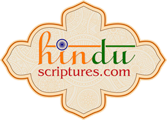SHIVA GITA
Contents
. Introduction
. Teachings of the Shiva Gita
. Conclusion
Introduction
The Shiva Gita is taken from Patala Khanda of Padma Purana and it is made up of 16 chapters. When Ravana takes away Sita, Lord Rama is in grief and Sage Agasthya consoles him and advises him to pray to Lord Shiva. Lord Shiva appears before Lord Rama and his teachings to Lord Rama form the Shiva Gita.
The Padma Purana is one of the eighteen major Puranas. It is divided into five parts and contains 55000 verses. It is considered a Sattva Purana which represents purity and goodness. Religion, essence of religion, creation, description of the Cosmos, the life and deeds of Lord Rama are some of the topics included here.
Teachings of the Shiva Gita
The Shiva Gita is a text of Vedantic Shaivism. in this Gita, the teacher is Lord Shiva, the disciple is Lord Rama and the narrator is Suta the disciple of Vyasa.
The Shiva Gita begins with the episode in the epic Ramayana where Lord Rama is depressed and grieving over the kidnapping of Mother Sita by Ravana. At this time, Sage Agasthya comes to console Lord Rama and advises him to observe a special vow called the Pasupata Vrata. By observing this vow Sage Agasthya assures Lord Rama that he will have a vision of Lord Shiva and he will be bestowed the Pasupata arrow without which it would be impossible to defeat Ravana. Lord Rama performs the vow and receives a divine vision of Lord Shiva at the end of four months. Lord Shiva presents the arrow to Rama and Rama asks a number of doubts and this dialogue between them in a series of questions and answers makes up the Shiva Gita.
Lord Rama asks Lord Shiva to explain how though he has a mortal frame with three eyes, with a moon on the crest and a radiant form, he is able to create, protect and dissolve the World made up of five elements and all forms of creation.
Lord Shiva replies that everything in creation, the Seen and the Unseen are all His glorious Manifestations as he is the primordial being, The Lord of the Vedas, the Savitri, the gayatri, the Truth among all, The Supreme one with six attributes, the Lord of the Vedas, The Puranas, the born and the Unborn, the past, present and future, The Pranava and the Ruler of the world. He said that he existed in all and everything existed in him. He was the sum and substratum of the whole Universe and the Eternal, All pervading Brahman. Everything was born from him and everything is established in him. He is subtler than the subtlest, greater than the greatest and purer than the purest. He told Rama that anyone who awakened to this truth, attained the fruit of liberation.
Lord Shiva then explained that though the seed of the banyan tree was tiny, the tree that came out of it was huge. Similarly though the Lord’s form looked limited in stature, the origin and dissolution of beings took place there. He then endowed Lord Rama with divine vision through which Rama could see the whole creation within the form of Lord Shiva. Seeing this cosmic vision Rama was overwhelmed and prostrated on the ground again and again in awe and humility at the glorious splendour of the Lord. He then began to extol Shiva with meaningful hymns that explained how delusion and maya had made Lord Rama unable to comprehend the glory of the Lord and these hymns contain the very essence of the Upanishads. He praised Lord Shiva who was the very essence of creation, who was the protector of all those who submerged in the world of duality sought refuge in him, who was the compassionate and forgiving lord, who was the eternal Cosmic Power, who was the Sovereign ruler of the three worlds, who pervaded every corner of creation and bowed humbly and offered salutations to Lord Shiva. He then prayed that the Lord would withdraw his cosmic form and the Lord withdrew his form and Rama witnessed him once again as the Benevolent and Compassionate Three eyed Lord Shiva with matted hair and tiger skin.
Conclusion
Having attained the Cosmic Vision of Lord Shiva, Rama was revitalised, a new power surged in him and full of confidence and devotion to the Lord he embarked on his onward journey towards locating Sita and destroying Ravana. Thus chanting of the Shiva Gita will increase determination, will power and give one faith and confidence in the grace of the lord and help in achieving success in all endeavours.
